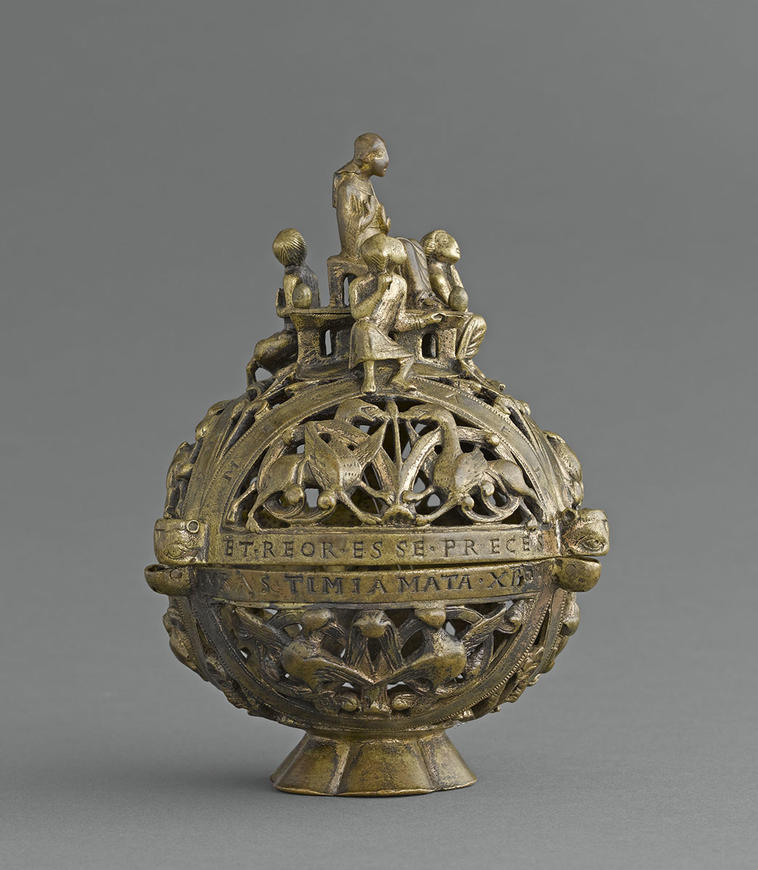The design of the object, which combines religious iconography with ornament, is one of exceptional richness.
It is a censer, an object used in Christian rites to burn incense. This one consists of two hemispheres, held together by chains which are now missing. It is adorned with foliage (scrolls of leaves), inhabited by the fantastic animals characteristic of Romanesque art.
At the top is depicted an episode from the Old Testament: three young Hebrews refused to bow down before a statue of the king of Babylon, Nebuchadnezzar. The latter condemned them to be thrown into a fiery furnace, from which they were rescued by an angel. The design of the object is therefore linked to its function: the smoke that escaped from it during the religious service gave the impression that the characters were sitting on coals!
The angel is placed on a pedestal. His wings have disappeared. He protects the three young Hebrews, whose names are inscribed on the artifact, from the flames. This character was cast separately and then attached to the censer using rivets.
This censer, a masterpiece from the brass works of the Moselle region, has been copied on numerous occasions. Indeed, it is emblematic of the taste for the Middle Ages that developed during the XIXth century. As soon as it was discovered, it immediately enchanted lovers of medieval art, including the famous architect Eugène Viollet-le-Duc (1814-1879), the same architect who restored Notre-Dame de Paris!
Inventory number: A 82
Detail :
The inscription in Latin on the circumference of the object probably names its sponsor: "I, Rénier, give this censer a sign so that at the hour of death you may grant me a funeral similar to yours, and in the belief that your prayers will rise like incense to Christ."

The design of the object, which combines religious iconography with ornament, is one of exceptional richness.
It is a censer, an object used in Christian rites to burn incense. This one consists of two hemispheres, held together by chains which are now missing. It is adorned with foliage (scrolls of leaves), inhabited by the fantastic animals characteristic of Romanesque art.
At the top is depicted an episode from the Old Testament: three young Hebrews refused to bow down before a statue of the king of Babylon, Nebuchadnezzar. The latter condemned them to be thrown into a fiery furnace, from which they were rescued by an angel. The design of the object is therefore linked to its function: the smoke that escaped from it during the religious service gave the impression that the characters were sitting on coals!
The angel is placed on a pedestal. His wings have disappeared. He protects the three young Hebrews, whose names are inscribed on the artifact, from the flames. This character was cast separately and then attached to the censer using rivets.
This censer, a masterpiece from the brass works of the Moselle region, has been copied on numerous occasions. Indeed, it is emblematic of the taste for the Middle Ages that developed during the XIXth century. As soon as it was discovered, it immediately enchanted lovers of medieval art, including the famous architect Eugène Viollet-le-Duc (1814-1879), the same architect who restored Notre-Dame de Paris!
Inventory number: A 82
Detail :
The inscription in Latin on the circumference of the object probably names its sponsor: "I, Rénier, give this censer a sign so that at the hour of death you may grant me a funeral similar to yours, and in the belief that your prayers will rise like incense to Christ."